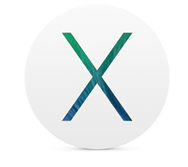SBGrid in Your Lab
SBGrid in Your Lab
SBGrid is a managed stack of software tools for Structural Biology workflows. We offer both CLI and GUI based installers for both Linux and MacOS. SBGrid is available as a personal "package manager"-like installation for individuals to use on their own machines, or as a complete collection suitable for HPC, or centrally managed installations shared via NFS.
Which Operating System should I choose (Linux, MacOS)?

Linux
Many of our users choose to install SBGrid on a Linux based system, often equipped with NVIDIA graphics cards. The vast majority of academic software is written with Linux in mind, making it the best choice for those with the skills to manage their system themselves, or with institutional support.
Additionally, an increasing number of new software titles in structural biology leverage GPU acceleration, with NVIDIA having the most mature ecosystem and tooling for supporting these workflows.
Which distro should I choose?
The SBGrid software collection is built for compatibility with Red Hat-derived Linux distros. While we explicitly test for compatibility with AlmaLinux 8 (recommended), it is expected to function seamlessly on later versions and related distros such as CentOS, Rocky Linux, and other Red Hat derivatives.
Other major Linux distributions will likely work (Ubuntu, Linux Mint, SUSE, Fedora, etc), but may require additional fine-tuning due to differences in core libraries. We will provide assistance on a best-efforts basis for any reported issues running SBGrid on such systems, but strongly encourage the use of a Red Hat descendant distro when high compatibility and stability is desired.

Mac
iMacs, Mac Minis, and MacBook Pros can support most standard structural biology workflows. The newest Apple Silicon M-series chips, used in systems produced after June 2023, are also generally well supported through a compatability layer called “rosetta” (not to be confused with the structural prediction software of the same name).
We currently test our software against MacOS versions 12-15, (Monterey through Sequoia). Most programs are expected to be forward compatible, and should work without issue on macOS 15 and later. If you have any concerns, you are welcome to contact us. You can check our list of supported software, or email us at bugs@sbgrid.org to ensure that your desired software is supported on your system before making a purchase commitment.
This may be the preferable choice for groups already familiar with the Apple ecosystem, or for lab members who are already Mac users.
I'm ready to go! Where do I start?
SBGrid can be installed in one of two ways; a "personal" installation best suited for individuals on their own machines, and a "site" level installation meant to serve larger groups with a centrally managed installation solution.
Personal Installs can be performed on both Linux and MacOS systems. Users can cherry-pick any desired subset of software and versions for their specific use-case, using either a GUI- or CLI-based installer, and is usually the fastest way to get started using SBGrid.
Users from member labs can submit a request for an SBGrid installation manager account here: sbgrid.org/registration/register and begin installing and using SBGrid on their own systems as soon as they are approved.
Site Installations are centrally managed, self-updating installations of SBGrid. It is ideal for HPC or server environments, and can be easily shared via NFS to any number of workstations or compute nodes you require. It is ideal when consistency, and centralized automatic updates and administration is desired.
Both installation methods are described on our wiki, and you are encouraged to contact us to discuss which approach would be most suitable for you and your lab members.
I still have some questions; where can I read more?
If your institution offers IT support, you are encouraged to reach out to them prior to making a decision. They may be able to provide a higher quality of support than is typically available if you choose to use specific hardware, vendors, or operating systems which they are familiar with.
You may find it particularly valuable in cases of a site installation, maintaining continuity and minimizing downtime as members join and leave your group.
Support Wiki
Visit our Support Wiki at sbgrid.org/wiki/Home for more details on installing software, using the SBGrid Environment, GPU computing, running SBGrid on AWS, and support for site administrators.
